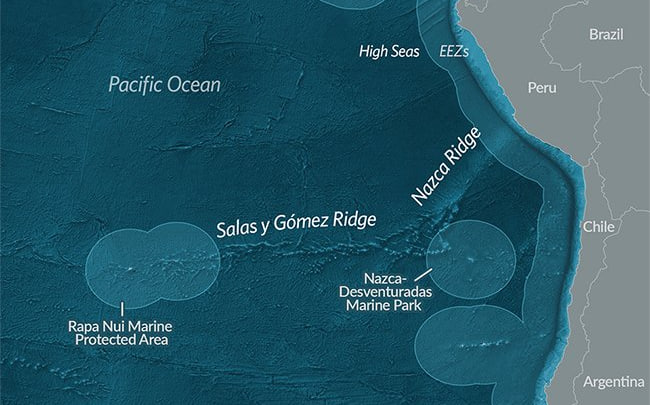Free Courses Sale ends Soon, Get It Now


Free Courses Sale ends Soon, Get It Now



Copyright infringement not intended
Picture Courtesy: https://twitter.com/cristianlaborda/status/1428489599559606273
Context: Scientists discovered a large number of potentially new species while exploring the Salas y Gómez Ridge, an underwater mountain range in the Southeastern Pacific Ocean.
Key Discoveries and Implications
|
Isla Salas y Gómez ●Isla Salas y Gómez, also known as Isla Sala y Gómez or Motu Motiro Hiva in the Rapa Nui language, is a small, uninhabited Chilean island located in the Pacific Ocean. ●The island comprises two rocks connected by a narrow isthmus, with a total area of approximately 15 hectares. The highest point on the eastern rock reaches 30 metres above sea level. ●The shoreline of Isla Salas y Gómez is characterised by cliffs and numerous tidepools, making it challenging to access the island except under calm sea conditions. ●The island is largely barren with minimal terrestrial vegetation, including only four species of terrestrial plants such as ferns. ●Isla Salas y Gómez serves as a rookery for seabirds, hosting approximately a dozen species of seabirds including Christmas shearwaters, masked boobies, brown noddies, and great frigatebirds. ●The island was known to the indigenous people of Easter Island (Rapa Nui), who occasionally visited to collect seabirds and eggs despite the challenging landing conditions. |
Conservation and Protection Efforts
Future Research and Collaboration
Conclusion
Must Read Articles:
Source:
|
PRACTICE QUESTION Q. Salas y Gómez, recently in the news for its diverse marine life, is an island under the jurisdiction of which country? A) United States B) France C) Chile D) United Kingdom Answer: C |
© 2024 iasgyan. All right reserved